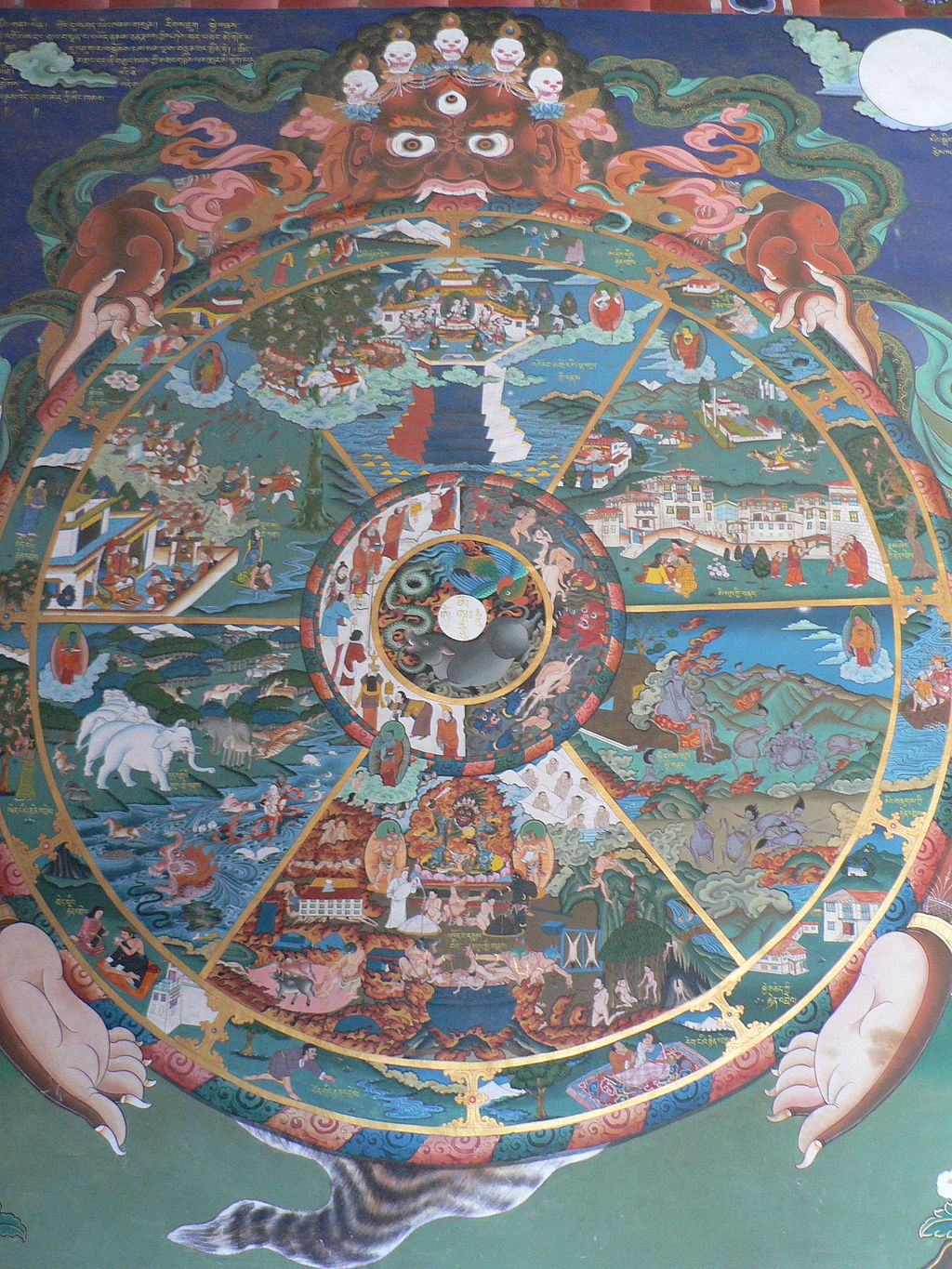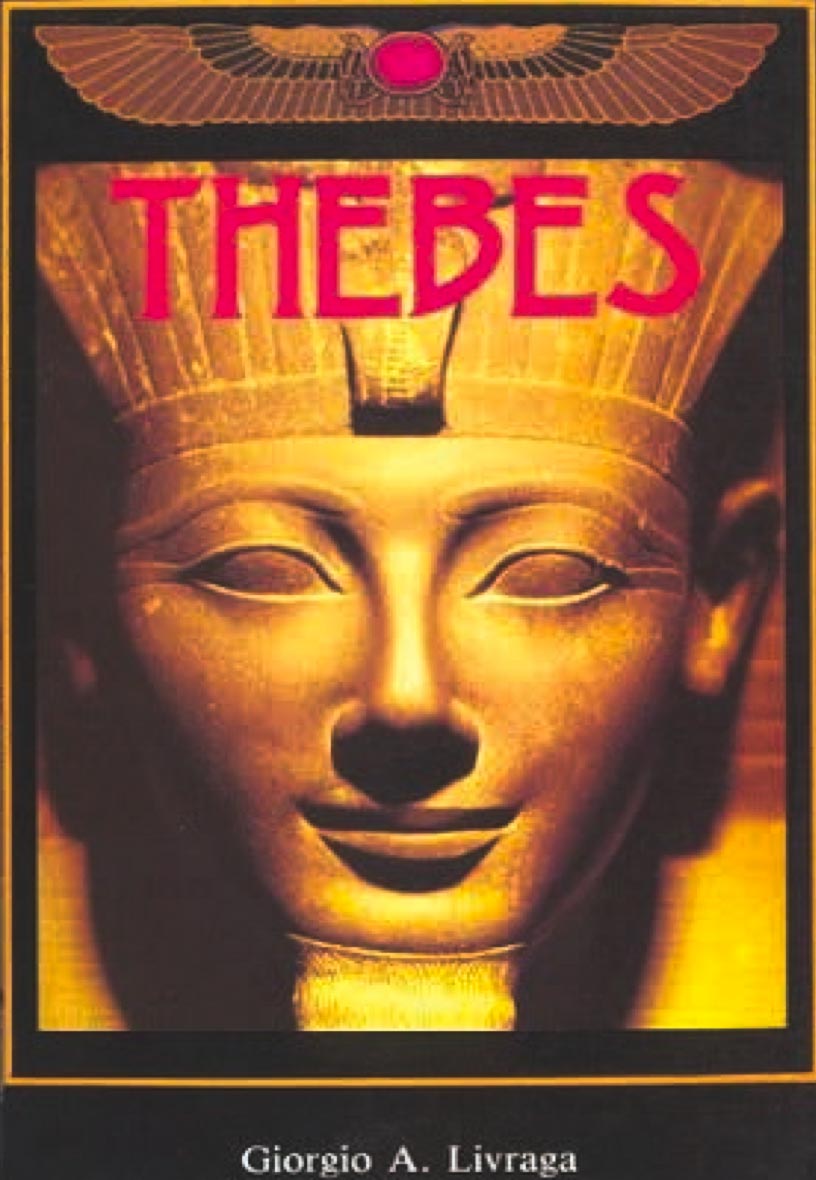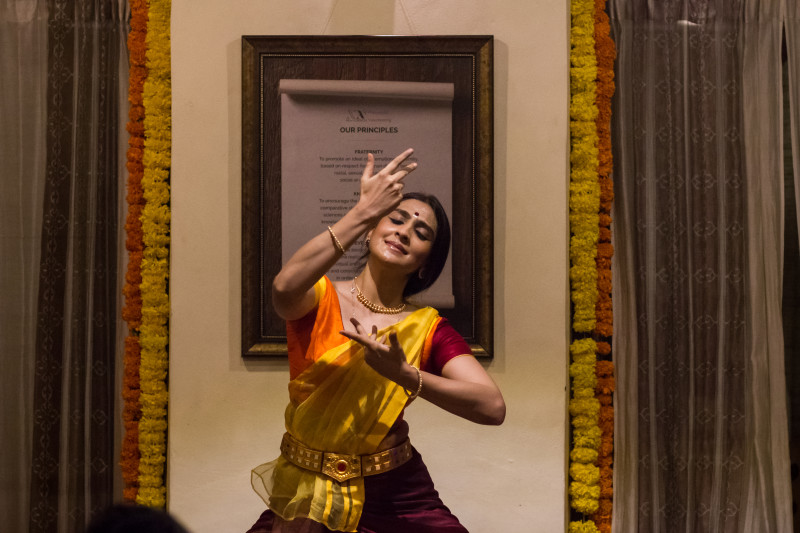The Philosophical Meaning of the Theory of Reincarnation
Article By Pierre Poulain
 In most ancient civilizations – like in an important number of faiths – we find the idea of reincarnation, the process that follows physical death. Modern occidental cultures consider death as the opposite of life, and in logical consequence reject death. Death is considered an aim, a disaster, and today most of us are afraid of death. In ancient times, and with another education, death was considered to be part of the natural cycle of life, a necessary process about which we need to learn, and not be afraid of.
In most ancient civilizations – like in an important number of faiths – we find the idea of reincarnation, the process that follows physical death. Modern occidental cultures consider death as the opposite of life, and in logical consequence reject death. Death is considered an aim, a disaster, and today most of us are afraid of death. In ancient times, and with another education, death was considered to be part of the natural cycle of life, a necessary process about which we need to learn, and not be afraid of.
Ancient Tibetan wisdom says that there is nothing more important in life than learning how to die well. This means that the time of our life can be used to prepare for the next stage…just as the time of death is, in a way, preparation for the next life.
Of course, this never meant that people looked for death; on the contrary, seeking death, like when performing a suicide, has always been considered disrespectful of the Cycle of Life and is a heavy fault, as we shall see later below. Preparing for death is to give signification to our life. But to fully understand the logic of the reincarnation process, we must first consider the following 4 concepts which are part of the traditional way of thinking, without which the logic of the reincarnation idea cannot be perceived.
The Basic Concepts:
I – There is an aim to evolution: the return to Unity.
Just like the physical cosmos was born from the Big Bang, the explosion of the primordial unity into a multitude of fragments, it is considered that the explosion of a primordial “Ocean”, the consciousness of divinity, gave birth to a limited, but very large number of “drops”…souls. And just like modern physics theories hold, after its expansion, the cosmos will enter a phase of concentration until it again reaches primordial unity, the evolution of souls passes through two main phases: expansion…which is considered the fall of the spirit into the material, and then the return towards unity, which would be the second phase of evolution.
This is why spiritual evolution is considered to be like the capacity to let the Unity, before the separation, prevail…the whole before the part…and so, the Simplicity before the complexity. As a fact, being conscious of “One” – even if this one includes all – is always simpler than having to remember a lot. Like in a puzzle, we begin with a lot of fragments, confusion and chaos, and slowly we bring order to the fragments, relating the one with the others, until we can perceive the whole picture as one. When the last fragment takes its place, the separating lines between the fragments – called the main illusion in Buddhism – disappear and the only reality is the simplicity of the unity of the puzzle.
It is not by surprise when reading words of wisdom from great philosophers from all times and all cultures, that our attention is often drawn to their capacity to explain with a few simple words what is still for us a complex idea. This is because they have reached the simplicity of unity.
II – The Path of Evolution is Cyclic, Not Linear.
As a universal law, all of evolution is cyclic, not linear. We know, for example, the cycle of the seasons during the year, the alternating cycle of day and night, and even the short cycle of inhalation-exhalation which keeps us alive.
This cyclic aspect of passing time is expressed in the Orient by the symbol of the Pa-Kua – the alternation of the Yin and the Yang in the Chinese tradition. These cycles are not considered different from a consciousness of Unity in essence, but they are diverse aspects of the same law…and the alternating cycle of life and death, is no more than another expression of the same and unique law.
In the Occident, in ancient Egypt, there was no specific word for “sleep”…it was called “the little death”, meaning that the nature of death and sleep is the same. The only difference would be the duration of the cycle, and the fact that just as we wake-up with the same body but wear different clothes every day, we “awake” from death – or reincarnate – into a new body. In a sense, our body is no more than more durable clothes.
In this way, if we don’t fear sleep, why should we fear death?
III – There is no arbitrary Divine Judgment
Reincarnation is considered a natural process, the application of natural laws and is not a punishment – or the reward – we get from a divine judgment.
The oriental traditions have developed the concepts of Dharma and Karma, where Dharma stands for “Law” and Karma would be the energy measuring the distance between what we are and what we aim to be… or in other words, between us and our “personal Dharma” or Svadharma, something like the tikun of the Kabbalah.
When the moment of death arrives, if no Karma is present it means that the soul has reached its aim, has reached the unit. Such a soul would be free from the Samsara, the cycle of reincarnations, and nothing in the world could force it to return. In contrast, if any Karma is still present, the natural process of evolution would cause this soul to reincarnate for another cycle, again and again, to have more opportunities to reduce the distance to, and reach, the aim.
In Egypt, we find the symbol of the “Judgment of the Death” where the heart of the deceased is weighed against the feather of Maat, a symbol of Justice.
If the heart of the deceased is heavier than the feather, then a “monster” will eat the heart and cause the rebirth of the soul. This monster has a body of a hippo, a symbol of pregnancy, and the head of a crocodile, which in Egypt was a symbol of ignorance; thus, the meaning would be that ignorance causes reincarnation. In contrast, if the feather is heavier than the heart, then the soul of the deceased is presented to Osiris, the “god of the dead” and accepted into the “Amen-Ti” – literally the Sacred (Amen) Earth (Ti), or Paradise.
Now…how can the heart be lighter than a feather? What is really Maat, the concept of Justice in Egypt? Justice is to be conscious of our own potential and to be able to express it in the right way in everyday life. If someone has any physical, emotional, intellectual or spiritual potential in life but does not use it, it is considered as an injustice, in the sense of a lack of respect towards Nature; not developing the potential nature has given us is like not living in accordance with the oriental Svadharma…and this would cause the return of the soul. But there is more: this potential has to be used in the “right way”, and right means to use it to serve Nature and not to search for personal benefit.
In the ancient Egyptian Temples, on the wall of the Naos, the spiritual heart of the Temple, we can see symbolic scenes of Pharaoh “doing the Maat”; in other words, having to prove that he had made good use of his power and authority to be able to enter this part of the Temple. He had to prove every day that his aim was to serve his people, and not to gain any benefit from his position. Of course, we are talking here of the archetype of what a “King-Priest” has to be, and we know well that history did not always exactly reflect this archetype.
In all cases, in the Orient as in the Occident, each one of us is held responsible for his own destiny, reincarnation or liberation, determined by our own acts. In this way, wisdom is the perception of the One-Law and the capacity to live according to it.
IV – Man is a Complex Entity, both Material and Spiritual
Man is considered a bridge, and this makes him special in the evolution process. A part of him can be considered material: the physical body, of course, but also our energy, our sentiments and even our ideas. In fact, all that can take “form” (an idea too can have form, limited by words and concepts), and the intellect can capture. All this, ideas, sentiments and of course the physical body is born, evolves and dies. All of these are temporal.
At the other end, another part of us can be considered spiritual. This would be the “soul”, all that is above the intellect – and because of this, the intellect has no way to perceive it, to “see” it, and of course to “prove” its existence. This is the eternal part of us, the reincarnating spirit. The material part is only the “clothes” we wear when we reincarnate…and it is different each time.
This means that the “real” man is the inner one, the invisible or spiritual one. But by being exclusively spiritual he cannot act directly in everyday life and so needs a support, a filter, to express himself. Just like an actor at a theater wears the mask of a character to play his role on the theaters stage, but then leaves it and wears another one in a next play, we too are all wearing a material personality to play our part on the stage of the world…and we too shall leave it until the moment to wear another one arrives…in another incarnation.
All our difficulties to understand and accept these concepts – commonly accepted in ancient civilizations – come from our identification with our personality (our mask); we are unaware of our true nature. This is why the Path to wisdom always begins by what is known today as the Delphi’s adage: “Know Yourself”.
The Process of Death…and Reincarnation
The process of what we call death for Man is explained as the separation of the 2 natures: the spiritual and the material. Death is not just a moment, but a duration of time…just like we need time to remove our clothes, beginning by the most external, taking them off one after the other, until being completely nude only at the end of the process…death is the same thing: we leave our different material supports, beginning by the most dense, one after the other.
So the first bodies to leave would be the physical and energetic ones, then the emotional, and at the end, the mental.
Most traditions speak about a bright light one can see a moment after the physical death. It’s the same light which is recalled by those whose have experienced an NDE (Near Death Experience) and which is called by the Bardo-Thodol, the Tibetan Book of the Dead, as the “First Primordial Light”. Evolution being mainly a process of consciousness toward globality, unity and simplicity (the complexity in the evolution of the biological form is the evolution of the support of the consciousness). This light is considered the ultimate simplicity, unity…and consciousness: it is the light of Truth, of the Divine Intelligence, Dharma, Theos, or God, or whatever name humans choose to give it. He who will be able to recognize this light at the very moment of death will in fact recognize the ultimate consciousness in the world. As there is no step remaining to go forward, such a soul will have reached liberation from this process and will not return to a new body. But for the rest of us, who cannot recognize this light because our limited consciousness is not capable to “capture” it, we just see…nothing. The darkness we see is only our inability to see the light…and with passing time, the “First Primordial Light” becomes the “Second Primordial Light”, then the Third…and so on. The consciousness is limiting itself in the manner of the Kabbalistic “tsimtsum” until it reaches the point where we can recognize it; at that moment, we shall see the brightest light we are able to recognize, and THAT is the light at the end of the tunnel…In other words, it is the junction between the lower divine consciousness and the higher human one.
Once the light has been reached there is no possible return into the same body. Then the process continues, the soul shedding its bodies, like the physical body, its clothes, until it reaches the complete nudity, and this would be…the intellectual consciousness. So, if we were able to develop a true spiritual consciousness during our life, or in other words, to develop a part of what in India is called Manas, Buddhi and Atma, which could be understood as Intelligence (not to know more, but to know better, to be able to separate the truth from the false), Intuition (which is Enlightment) and Will (which is something our words cannot define)…then, and only then, can we stay conscious in the nudity of the after-death. This is because all the material nature, all that was born in this specific incarnation, will die with it. If our consciousness is only material – emotional and intellectual – it will die with the after-death and we shall get a new consciousness – materialistic as well – only the next time we shall “wear” a material body. In contrast, developing here and now, during our lifetime, a spiritual consciousness will allow us to stay conscious even after death and will allow us to reach the continuity of consciousness between one life and another.
In conclusion
And afterwards…well, after this the cycle goes on. A natural process similar to the one which initiates the process of death will initiate the process of re-birth. It is called “Skandas” in the Orient, and it’s technical description is beyond the scope of this simple article. The important thing is to understand that the reincarnation theory is based on the idea that the Roman Philosophical Emperor Marcus Aurelius wrote: “Death is a natural process, and there is nothing bad in nature.” So there is no need to fear death.
We have all our life to prepare ourselves for death, and this means: doing our best to live “justly”, according to the Egyptian Maat, to develop our true potential, to conquer our true identity, to detach ourselves from the ignorance and the apparent… To prepare ourselves for death is in fact to reach our real and spiritual essence; it allows us to live our life plainly because we don’t have to fear death any more.
This is the philosophical base of this theory…which is for some of us more than a theory: it allows us to gain our freedom, and it says to us that we are all the masters of our own destiny.
Image Credits: By Christopher Michel | Wikimedia Commons | CC BY 2.0
The entity posting this article assumes the responsibility that images used in this article have the requisite permissionsImage References
By Christopher Michel | Wikimedia Commons | CC BY 2.0
Permissions required for the publishing of this article have been obtained
Article References
This article was first published in Hebrew in August 2007 in the Acropolis Magazine of Israel. Mr. Pierre Poulain is the Founder and National Director of New Acropolis Israel.




“… the explosion of the primordial unity into a multitude of fragments, it is considered that the explosion of a primordial “Ocean”, the consciousness of divinity, gave birth to a limited, but very large number of “drops”…souls.” – This statement contradicts Gita verse [2.24] which says – “This individual soul is unbreakable and insoluble, and can be neither burned nor dried. He is everlasting, present everywhere, unchangeable, immovable and eternally the same.” Therefore your statement cannot be a Vedic statement. For more details take a look at the soul theory chapter in the free book at https://theoryofsouls.wordpress.com/